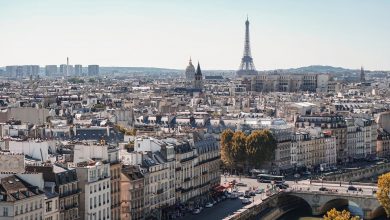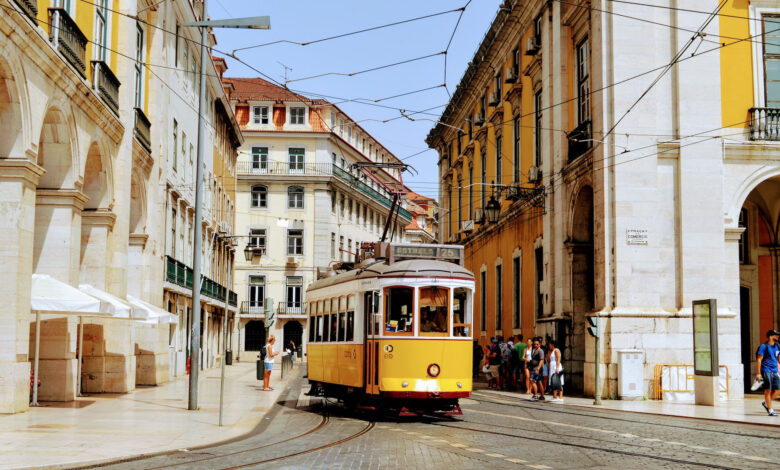
[ad_1]
Heads up: some of the links on this site are affiliate links. If you click and make a booking or purchase, I’ll make a commission (at no extra cost to you). I partner with companies I personally use and the $$ goes towards creating more awesome, free travel content.
Portugal is one of my favorite countries in the world, so much so that I spent the best part of a year living there. It’s one of the most affordable countries to visit in Europe and experiences over 300 days of sunshine per year, so you have a fairly good chance of experiencing nice weather on your visit!
With gorgeous beaches, world-class surfing, amazing seafood and picturesque cities, Portugal is definitely one of the best kept secrets in Europe.
You’ve probably already heard of cities like Lisbon and Porto, but what is Portugal known for? Let’s take a look at all the things that Portugal is famous for…
Port Wine
Wine lovers will love Portugal. Wine in the grocery stores is cheap and you’ll pay around €3 to €5 for a glass of wine in a restaurant.
The country is famous for producing port wine, which is a sweet red wine that’s made in the Duoro Valley region of northern Portugal.
If you want to sample some good port wine, head to the city of Porto, where you’ll find numerous wine cellars and tasting rooms. Spend an afternoon strolling around the Vila Nova de Gaia area, visiting port wineries such as Burmester, Caves Cálem, Sandeman and Taylor’s.
Vinho Verde Green Wine
Portugal is famous for its vinho verde, which translates as “green wine”. This wine originated in the historic Minho province in the north of Portugal and is basically a young wine released around three to six months after the grapes have been harvested. Despite the name, vinho verde is not green in color – it’s usually a white wine but can also come in red and rosé versions.
Vinho verde is very affordable and you’ll find it in most restaurants and supermarkets. Expect to pay around 5 or 6 euros in the supermarket for a bottle of Casal Garcia.
Fado Performances
Fado (which literally means “fate”) is a type of Portuguese music that can be traced back to 1820’s Lisbon. Fado lyrics can be about anything, but typically songs have melancholy tunes and lyrics, often about the sea or life’s harsh realities. It’s usually performed by a male or female singer, accompanied by two guitars, a couple of violas and sometimes a string bass viola.
The best place to experience fado music is in the Barrio Alto district of Lisbon, which is where the genre originates from. Popular faso bars include Tasca do Chico, Adega Machado and Casa de Fado.
Peri Peri Chicken
Those who live in the UK and some parts of the US will already be familiar with Nandos, a popular chain of restaurants that serves Portuguese peri peri-style chicken.
Peri-peri chicken is basically chicken that’s been marinated in a peri peri sauce, which is spicy and made with crushed chili peppers. It was first made by Portuguese explorers in Portugal’s former South African territories.
Bacalao and Cod Fish
Portugal’s national dish is bacalhau, which is dried, salted cod. It’s not technically a dish, as you’ll find cod fish cooked in many different ways. Most cafes and takeaway eateries will have pastéis de bacalhau or bolinhos de bacalhau, which are basically deep fried balls of salt cod and potatoes.
Other popular dishes are bacalhau com natas (bacalhau with cream and potatoes), bacalhau à brás (bacalhau with scrambled eggs and potatoes) and bacalhau à lagareiro (bacalhau with olive oil).
Surfing
With thousands of miles of coastline, Portugal is one of the world’s top surfing destinations and is known for its impressive Atlantic waves. Towns like Ericeira, Nazaré, Peniche and Sagres are all excellent for surfing and boast some beautiful, rugged scenery.
Praia do Norte is known for having the biggest waves in the world, and it’s here that German surfer Sebastian Steudtner set the world record for the biggest wave ever surfed. It was 86ft high!
If you’re keen to learn to surf, the country has waves for all skill levels from beginner to advanced. There are lots of surf hostels and surf camps, who’ll provide you with lessons, equipment and meals.
Algarve Beaches
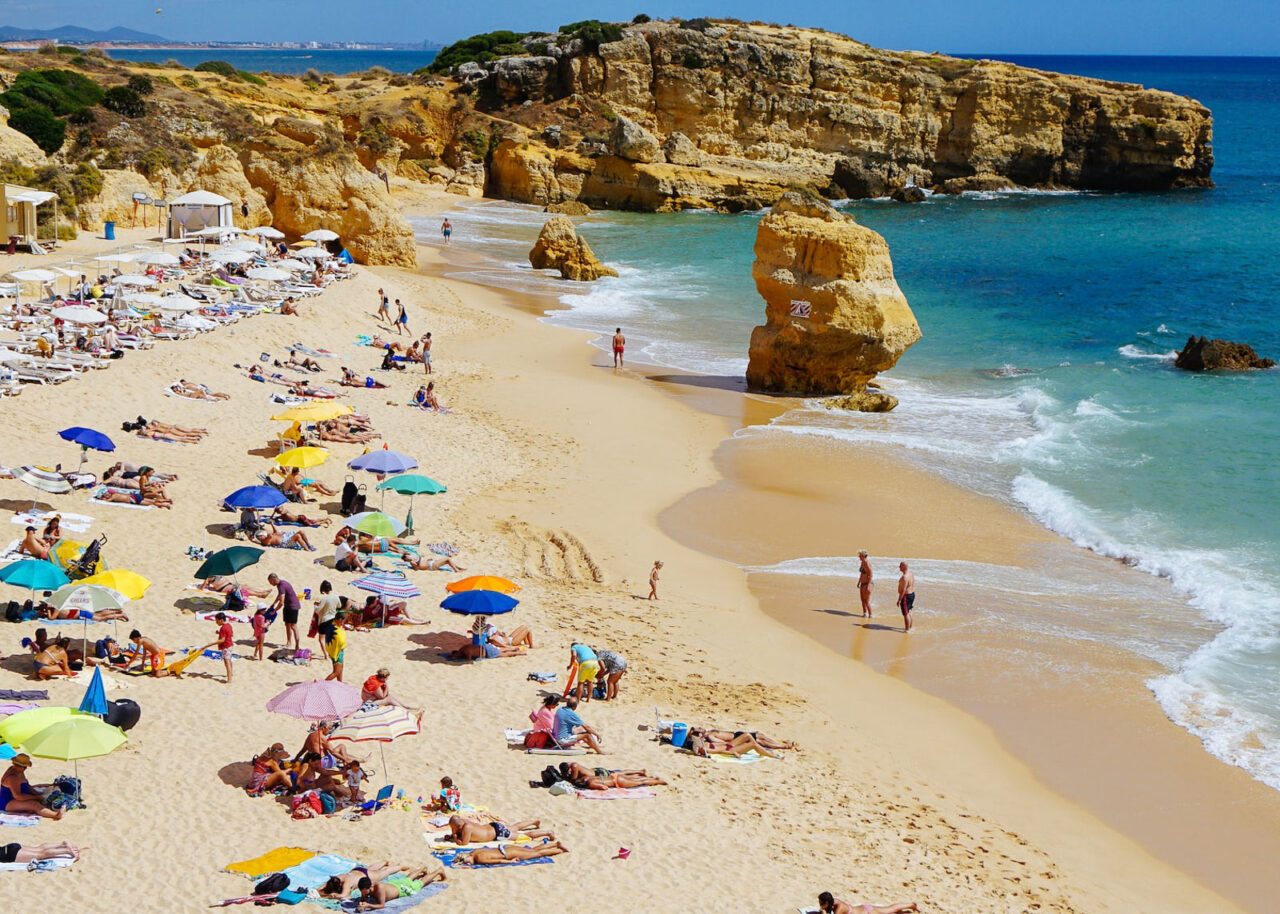
Nestled on Portugal’s south coast, The Algarve is home to some of the most beautiful beaches in Europe. Many of them feature yellow-colored limestone cliffs and cool rock formations, alongside turquoise blue waters.
Among the best beaches to visit in the Algarve are Praia de Dona Ana, Praia do Camilo, Praia da Marinha and Praia de São Rafael. You can easily spend a week here just beach hopping, exploring all the different coves and lounging around on the sand. It’s also worth booking a kayak tour to visit some of the beautiful caves and grottos along the coastline.
Trams
Lisbon is famous for its historic trams, which carry passengers up and down the city’s steep hills. These trams date back to the early 1900s and are still in use today.
Tram No. 28 is the most famous one, which passes through popular neighborhoods such as Alfama, Baixa, Estrela and Graca. This rickety yellow tram is heavily photographed and trundles through Lisbon’s streets between Martim Moniz and Campo Ourique. Make sure you hold on tight as the tram makes some tight turns!
Galão Coffee
Love your caffeine fix in the morning? Make sure you try galão Coffee, which is made with espresso coffee and foamed milk. It’s usually served in a glass mug with a tall spoon and a few packets of sugar on the side. Galão is the Portuguese version of a latte or cafe au lait, and is usually consumed in the morning at breakfast time.
Pastéis de Nata
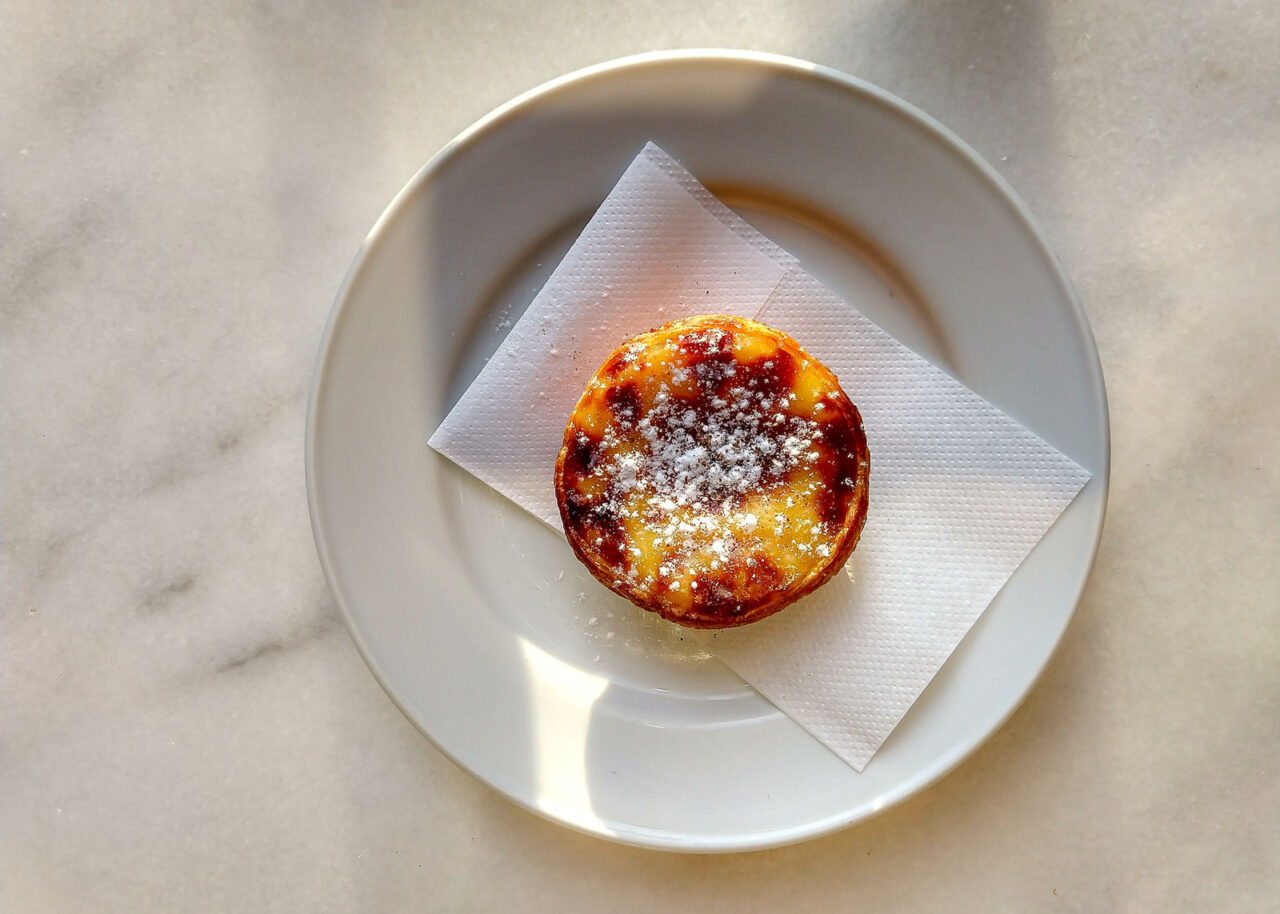
While you’re in Portugal you must try pastéis de Nata, which are Portuguese egg custard tarts. These delicious pastries were invented before the 18th century by Catholic monks at the Hieronymites Monastery in Lisbon and are now famous throughout the world.
If you decide to visit Lisbon make sure you pay a visit to Pastéis de Belém, a famous bakery that’s been making Pastéis de nata since 1837. These flaky pastries are made by hand using traditional methods and are known for being the best custard tarts in the city. They’re incredibly moreish and best eaten with a coffee in the afternoon!
Azulejo Tiles
All over Portugal you’ll see ceramic Azulejo tiles, which were produced from the 14th century onwards. The tiles adorn many buildings and historic places, and are predominantly blue and white in color, although you’ll see some yellow and green among the designs.
Lisbon is home to The National Museum of the Azulejo, which was founded in 1965 to preserve this famous Portuguese art form. The word “azulejo” has roots in Arabic and means ‘small polished stone’.
Golf
Portugal is excellent for golfing due to its year-round sunshine and perfect playing conditions. The very first golf course formed in Portugal was Oporto Niblicks Club (now known as Oporto Golf Club) and today the country has over 70 golf courses, which are mostly clustered around the Algarve and Lisbon areas.
With top-rated golf courses such as Monte Rei, Quinta do Lago and Victoria, it’s an exceedingly popular destination for golf tourism.
Christiano Ronaldo
Even if you’re not a big soccer fan you’ll probably have heard of Christiano Ronaldo, one of the most famous soccer players in the world. Ronaldo was born in Funchal, which is located on the Portugues island of Madeira.
Today Ronaldo owns many properties, including an apartment in Lisbon and a seven-story home in Madeira. He also reportedly purchased Portugal’s most expensive home; a mansion located in the Cascais region of Quinta da Marinha.
Cork
Boasting around 30% of the world’s cork forests (1.6 million acres), Portugal is the largest producer of cork before Spain. So next time you open that bottle of wine or champagne, remember it’s quite possible the cork came from Portugal!
If you want to bring back souvenirs for your friends and family, consider cork gifts, such as coasters, bags, shoes, bracelets and purses.
Famous Explorers
Portugal is known for being one of the countries at the forefront of the Age of Discovery, when navigators set out to discover the New World.
This period of exploration took place between the 15th and 17th centuries, with many expeditions being launched from Portuguese shores. Prince Henry the Navigator financed numerous expeditions to explore the western coast of Africa, and by the time he died, Portugal had formed colonies on the islands of Madeira, Porto Santo and the Azores.
In 1497 Vasco de Gama and his men sailed around the Cape of Good Hope in Africa and made it across the Indian Ocean to Calcutta. The success of this voyage opened up the first route between Europe and India, paving the way for a new era of global trade.
Pena Palace
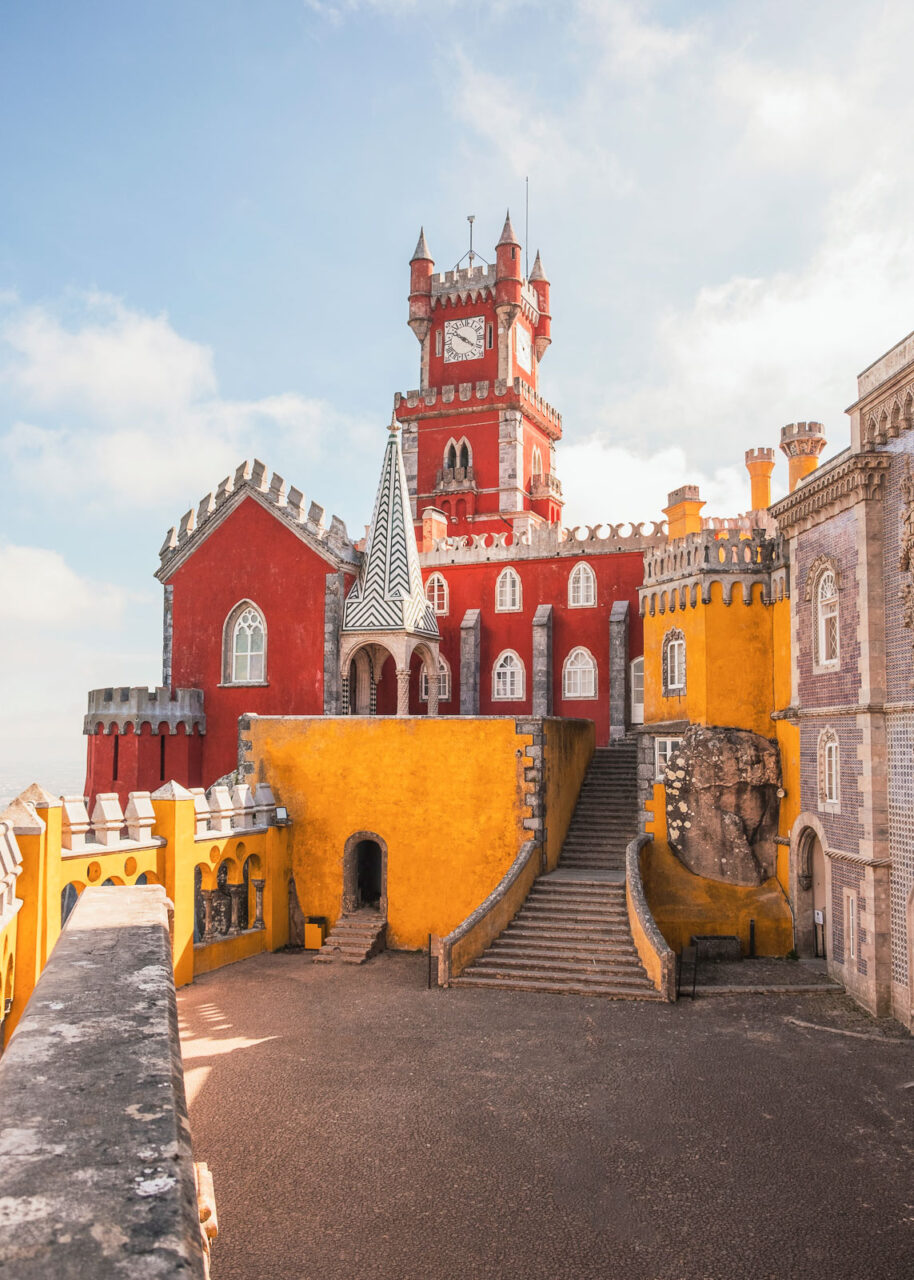
Perched on a hill in the Sintra mountains near Lisbon, Pena Palace looks like something out of a fairytale. This beautiful palace is built in a romanticist style, with a whimsical exterior and lush forests surrounding it. A notable feature is the clock tower, which was designed in a similar style to the Torre de Belem in Lisbon.
Not surprisingly, Pena Palace is a dedicated World Heritage Site and its terraces offer beautiful views over the Sintra Valley. Entry to the Pena Palace is restricted to 400 people per session in 30-minute time slots, and it’s strongly advised to buy tickets at least a day before your trip.
The Azores
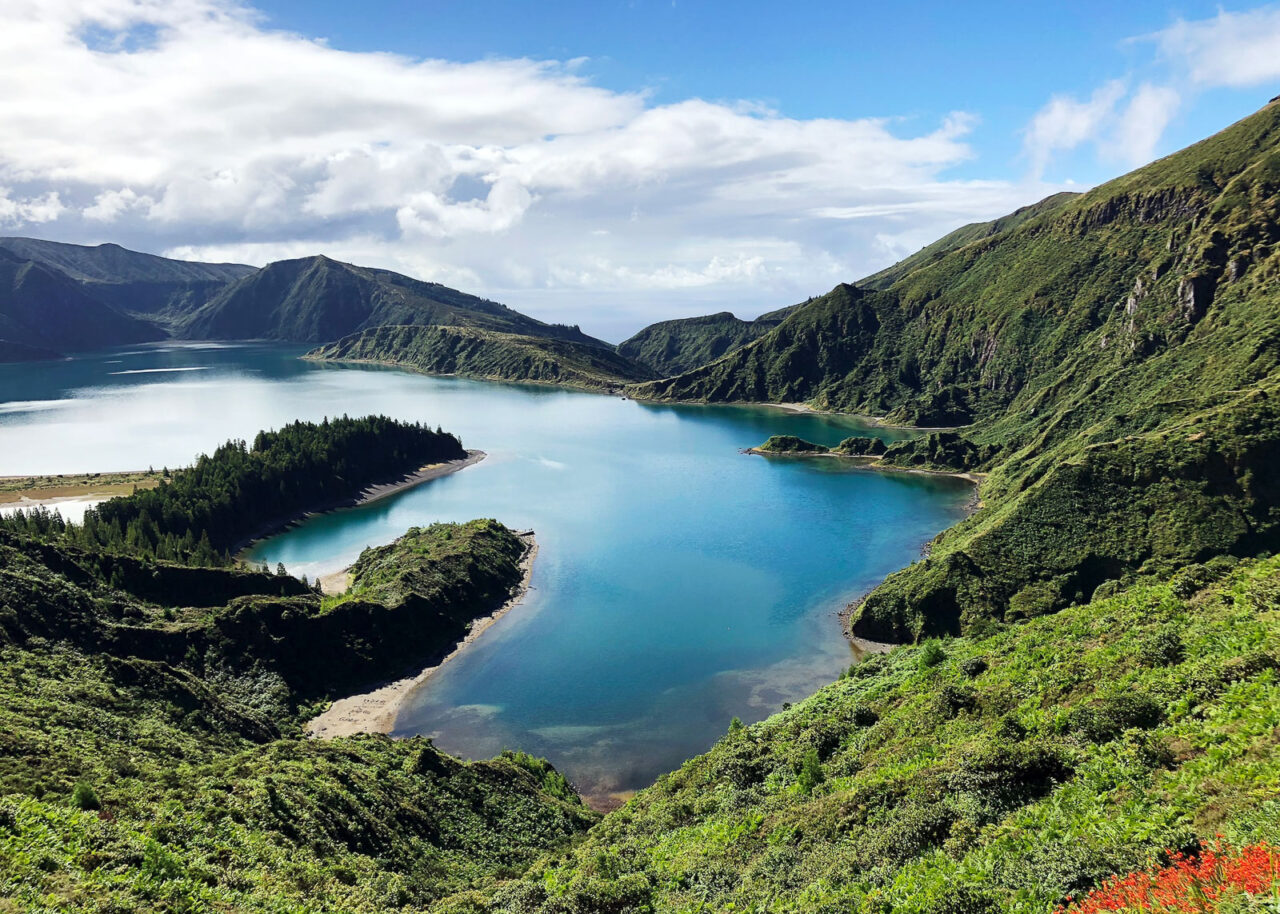
The Azores is an archipelago of nine islands located in the middle of the Atlantic Ocean off the coast of Africa. Discovered in 1427 by Portuguese explorers, the archipelago was colonized and claimed as a Portuguese territory.
The islands showcase nature at its finest, with vineyards, beaches, geysers and stunning lakes carved out by volcanoes. To get to the Azores you’ll need to fly there by air; TAP has several flights per day from Lisbon to the Azores, while Ryanair offers direct flights from London Stansted. If you’re coming from the United States, Azores Airlines offers direct flights from Boston.
Lisbon
Portugal’s capital city is among the most famous cities in Europe, known for its hilly landscape, historic yellow trams and beautiful “miradouros” (viewpoints). From these viewpoints visitors can soak in panoramic views of the Tagus River and the city’s terracotta rooftops.
Popular attractions to visit here include Praca do Comercio, Santa Just Lift, Jeronimos Monastery Belem Tower, Time Out Market Lisboa and São Jorge Castle in Alfama. Just a train ride away you have some great sandy beaches, such as Praia de Carcavelos, Praia do Tamariz and Praia da Poça.
Intend to spend around 3 days in Lisbon if you want enough time to explore most of the major things to do.
Porto
Portugal’s second most famous city is Porto, which is roughly a three hour drive north of Lisbon. This beautiful city is slightly more relaxed than the capital, with lots of port wineries where you can taste some sweet red wines.
At the heart of Porto lies the Douro River, which stretches some 897 kilometers (557 miles) into Spain and northern Portugal. The river is spanned by six impressive bridges, which are best viewed by taking an hour-long boat cruise along the water.
Popular day trips from Porto include the Douro Valley, where port wine is made, and Aveiro, which is known as the Venice of Portugal due to its many canals.
Sagres, The End of the World
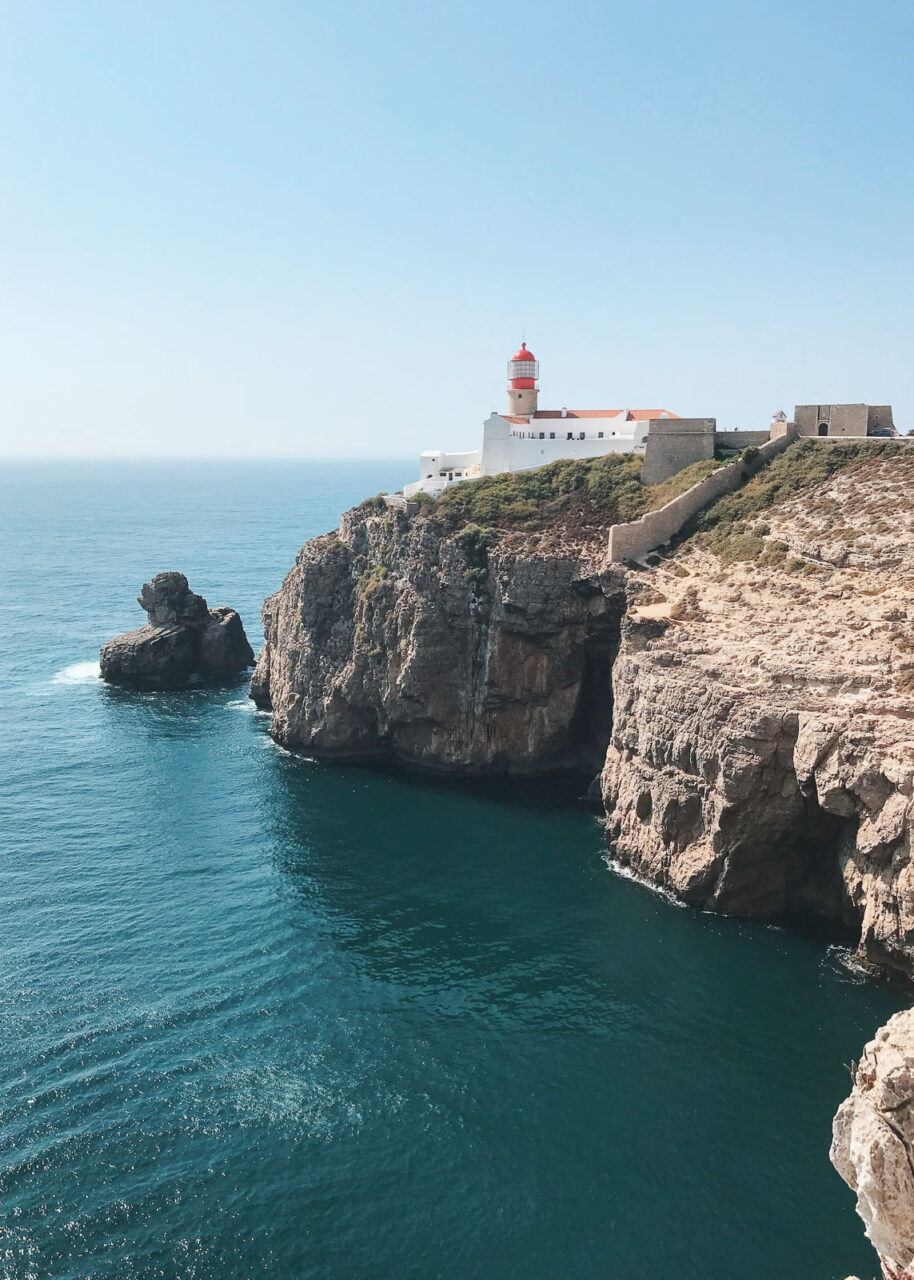
Sitting at Portugal’s most south westerly point, Sagres is often known as “The End of the World”. It’s from this spot that many Portuguese explorers launched their ships and set off to discover the new world during the Age of Discovery.
Before the 15th century, the Romans called it “Promontorium Sacrum” and believed the sun sank here. Many people believed that if you sailed out into the horizon, you’d just drop off the face of the earth into a black hole.
This sleepy town is about a 30-minute drive from Lagos and is known for its dramatic cliffs and scenic coastal path. Cabo Sao Vincente (Cape St. Vincent) is the main attraction here – a viewpoint with 75m-high cliffs and a powerful lighthouse that can be seen by sailors from around 60km away.
A Final Word…
Whether you’re planning a city break or a beach vacation, Portugal is always an excellent choice that won’t break the bank. It’s much cheaper to visit than countries like France and Germany, and the scenery is quite simply breathtaking. Check out my Portugal travel guide for plenty of tips on things to do and how to get around.
Have any more suggestions for this list of things Portugal is known for? Leave a comment below!
[ad_2]
Source link






